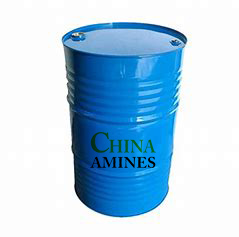1. Chemical Structure and Properties
Molecular Formula: C₃H₈O
Structural Formula: CH₃CH₂CH₂OH
A primary aliphatic alcohol with a three-carbon chain and a hydroxyl (-OH) group at the terminal carbon.
Physical Properties:
Appearance: Clear, colorless liquid with a mild alcoholic odor.
Boiling Point: 97°C; Density: 0.80 g/cm³; Vapor Pressure: 15 mmHg at 25°C.
Solubility: Fully miscible with water, ethanol, and most organic solvents; hygroscopic.
Chemical Properties:
Reactivity: Oxidizes to propanal (aldehyde) and further to propanoic acid under strong conditions.
Forms esters with carboxylic acids (e.g., propyl acetate) and participates in nucleophilic substitutions.
Flammability: Highly flammable (flash point: 22°C; autoignition temperature: 385°C).
2. Industrial Applications
Solvent Industry:
Coatings & Inks: Used as a co-solvent in cellulose-based lacquers and printing inks for improved flow.
Cleaning Agents: Effective in degreasing metals and electronics due to moderate evaporation rate.
Chemical Synthesis:
Intermediate: Produces plasticizers (e.g., tributyl citrate), pharmaceuticals (e.g., ibuprofen prodrugs), and agrochemicals.
Cosmetics & Personal Care:
Carrier Solvent: Found in perfumes, lotions, and antiseptics for its mild odor and low skin irritation.
Fuel Additives:
Oxygenate: Blended into biofuels to reduce emissions and improve combustion efficiency.
3. Safety and Toxicology
Health Hazards:
Acute Exposure:
Inhalation (≥400 ppm): Dizziness, headache, and respiratory irritation (TLV-TWA: 200 ppm).
Skin Contact: Causes defatting and dermatitis with prolonged exposure (rabbit skin LD₅₀: >2,000 mg/kg).
Ingestion: Moderately toxic (oral LD₅₀ rat: 1,870 mg/kg); metabolic acidosis in high doses.
Chronic Effects:
Neurotoxicity: Potential CNS depression with repeated high-level exposure.
Liver/Kidney Damage: Observed in animal studies at doses >1,000 mg/kg/day.
Protection Measures:
PPE: Nitrile gloves, vapor respirators, and explosion-proof equipment.
Storage: Fireproof containers in cool, ventilated areas away from oxidizers.
4. Environmental and Regulatory Compliance
Environmental Impact:
Biodegradability: Rapidly degraded aerobically (OECD 301F: >90% in 28 days).
Aquatic Toxicity: LC₅₀ (fish, 96h): ~1,000 mg/L; low bioaccumulation (log Kow: 0.32).
VOC Emissions: Classified as a volatile organic compound (VOC) in coatings and adhesives.
Regulatory Frameworks:
EU: CLP Regulation: Classified as Flam. Liq. 2 (H225), Eye Irrit. 2 (H319).
REACH: Registered with no SVHC listing; restricted in consumer products above 0.1% in some categories.
USA: EPA: Regulated under Clean Air Act for VOC emissions; listed on TSCA Inventory.
China: GB 13690-2009: Classified as Hazardous Chemical (Class 3.2).
5. Case Studies and Application Insights
Case 1: Green Antiseptic Formulation (3M, 2022):
Challenge: Replace ethanol in hand sanitizers with a less volatile, equally effective alcohol.
Solution: 1-Propanol (70% w/w) blended with glycerin achieved 99.9% pathogen kill rate.
Result: Reduced evaporation loss by 30% and extended shelf life in tropical climates.
Case 2: Biofuel Oxygenate in Aviation (Neste, 2023):
Process: 1-Propanol-derived esters improved cold-flow properties in sustainable aviation fuel (SAF).
Outcome: 15% lower particulate emissions vs. conventional jet fuel.
Comparative Analysis:
1-Propanol vs. Ethanol:
Pros: Lower volatility, higher energy density, and reduced hygroscopicity.
Cons: Higher toxicity and flammability risk.
1-Propanol vs. Isopropyl Alcohol (IPA):
Pros: Better biodegradability and lower residue in cleaning applications.
Cons: Less effective as a disinfectant (lower microbial kill rates).
Specifications:
Propyl Alcohol (Propan-1-ol) is a clear, fast-evaporating solvent with high purity, excellent solvency, and broad industrial use in coatings, pharmaceuticals, and cleaning agents, available from China Amines Co.


